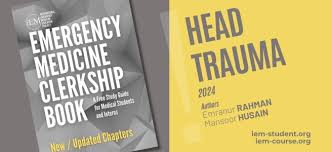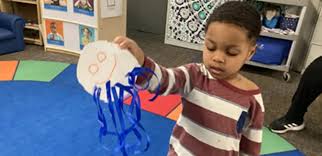Aesop’s fables have long been a treasured collection of stories that impart timeless wisdom, teaching children valuable life lessons through simple yet powerful narratives. Today, these ancient tales still resonate with young minds, but in our digital age, there’s an opportunity to reimagine them for the modern world—specifically for the realm of internet safety. By reinterpreting Aesop’s classic fables through the lens of internet safety Aesop, we can impart vital lessons on how to navigate the online world with caution, responsibility, and awareness.
In this article, we’ll explore how some of Aesop’s fables can be modernized to address crucial aspects of internet safety, offering both children and parents practical wisdom for safer online behavior.
The Tortoise and the Hare: Slow and Steady Wins the Race (Online)
In the classic fable of The Tortoise and the Hare, the slow and steady tortoise beats the overconfident and hasty hare. Reimagining this fable in the context of internet safety, the story becomes a lesson in being cautious and deliberate online.
In today’s fast-paced digital world, it’s easy to rush into sharing personal information or clicking on questionable links. Just like the hare who races ahead without thinking, a child could easily be lured into a dangerous situation by acting impulsively online.
The tortoise, on the other hand, takes its time, carefully making decisions and thinking things through. The internet safety Aesop message here is clear: slow down, verify the information, and think before clicking. Being patient and cautious online can help children avoid the traps of scams, cyberbullying, and other online dangers.
The Boy Who Cried Wolf: Be Honest About Online Threats
Another well-known Aesop’s fable is The Boy Who Cried Wolf, where a young shepherd repeatedly tricks villagers into thinking a wolf is attacking the flock, only to eventually be ignored when a real wolf appears. This tale offers a powerful lesson on trust, honesty, and the importance of not exaggerating online threats.
In the world of internet safety, children sometimes encounter real threats—whether it’s a cyberbully, an inappropriate website, or an online predator. If children make light of these situations, they risk not being taken seriously when they genuinely need help. Internet safety Aesop teaches kids that it’s crucial to be honest and open about online problems so that parents or guardians can intervene before something harmful happens.
Just like the villagers who learned the boy’s cries were false, if children cry “danger” without real cause, they may lose the trust of those around them. Learning to speak up when facing a genuine online threat—without exaggerating—helps ensure that parents or trusted adults can offer the support they need.
The Fox and the Grapes: Recognizing What’s Out of Reach
In The Fox and the Grapes, a fox desperately wants some grapes but, after failing to reach them, decides they were probably sour anyway. This story teaches us about managing desires and understanding limitations, which can easily apply to online behavior.
For children, the internet offers an abundance of tempting things: games, social media, and apps that promise instant gratification. However, just like the grapes in the story, not everything online is meant for them, nor should they have access to everything. The internet safety Aesop lesson here is that it’s okay to recognize when something is not appropriate or safe for you. Not all content is healthy or suitable, and sometimes, it’s better to walk away from things you can’t access or should avoid—just as the fox walked away from the unreachable grapes.
By understanding that certain things are off-limits and learning how to manage online temptations, children can better navigate the internet in a safe and balanced way.
The Ant and the Grasshopper: Planning for the Future
In The Ant and the Grasshopper, the hardworking ant prepares for the winter by gathering food, while the carefree grasshopper spends the season singing and dancing. When winter comes, the ant is warm and well-fed, while the grasshopper struggles. This fable highlights the importance of planning ahead and thinking about long-term consequences, which is an important lesson in internet safety.
For children using the internet, the grasshopper might be tempted to neglect privacy settings or ignore warnings about online safety, thinking that nothing bad will happen. However, the ant knows that preparation is key. The internet safety Aesop message is that planning ahead—like setting strong passwords, understanding privacy settings, and using devices safely—can protect children from online threats in the future.
Just as the ant prepares for winter, children should prepare themselves to use the internet safely by learning about security measures, recognizing potential threats, and being mindful of what they share online.
The Lion and the Mouse: Small Actions Can Lead to Big Protection
In The Lion and the Mouse, a tiny mouse helps a mighty lion escape from a hunter’s net, demonstrating that even the smallest creature can make a big difference. This story can be reinterpreted to teach children that small actions can help protect them online—whether it’s reporting an inappropriate message, blocking a user, or simply telling a trusted adult about an online issue.
The internet safety Aesop takeaway is that children shouldn’t underestimate the power of small actions when it comes to online safety. Reporting suspicious activity or telling someone about a concerning interaction online might seem like a small gesture, but it can make a big difference in preventing harm.
Conclusion: Internet Safety Aesop for a Digital World
By reimagining Aesop’s timeless fables through the lens of internet safety, we offer children valuable lessons about how to approach the online world responsibly. Whether it’s being cautious, honest, or planning ahead, these internet safety Aesop lessons can serve as guiding principles for navigating the complex digital landscape.
Parents can use these reimagined fables as fun and memorable ways to teach children the importance of being mindful and aware of the risks associated with internet use. By combining Aesop’s wisdom with modern technology, we can ensure that children grow up not only understanding the value of safety in the physical world but also in the digital world.
What lesson from Aesop’s fables would you apply to online safety in your child’s life?




